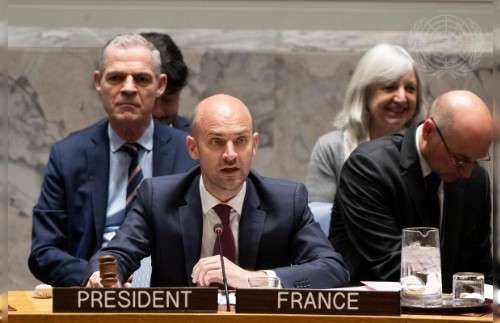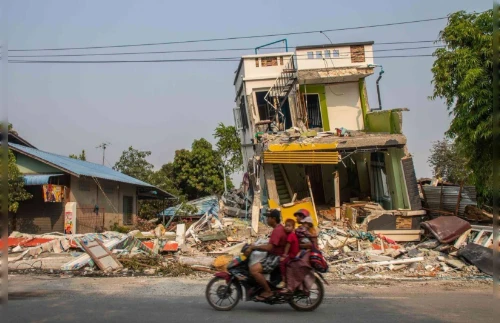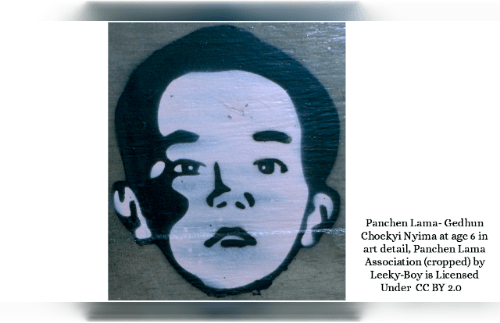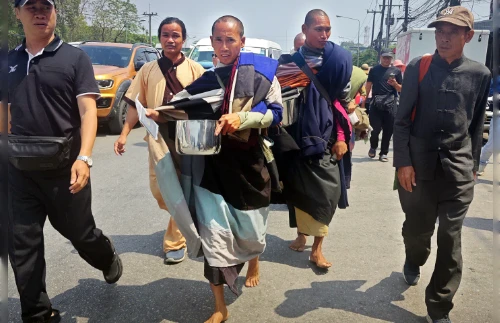
Chinese authorities building a fence topped with barbed-wire along China’s border with Myanmar’s Shan state to curb the spread of the coronavirus failed to hold pre-construction talks with their Myanmar counterparts and may have infringed upon the officially demarcated border line, local administrators said.
Work began on the “Southern Great Wall” earlier this year, of which 660 kilometers (410 miles) have already been completed, RFA reported on Dec. 14. Chinese authorities started erecting the border fence along three townships of the Kokang Self-administered Zone in September.
The fence, three meters (10 feet) high in some places, is intended to prevent the spread of the coronavirus pandemic by stopping illegal crossings in both directions, according to Chinese media.
Ngwe Doe, general administrator of Laukkai township, said Chinese authorities told him that the purpose of the fence is to prevent illegal border crossings during the height of the COVID-19 virus and that it will be removed when the pandemic is over.
As of Tuesday, Myanmar reported 117,946 COVID-19 cases and 2,484 deaths, while China continued to report 86,867 confirmed cases and 4,634 total deaths, according to information from health ministries in both countries.
“The fence is made of iron poles and barbed wire, which seems temporary,” Ngwe Doe said. “I didn’t see security cameras at the location I observed, but they said there is one or two in some areas. So far, they haven’t electrified the fence.”
The governors of Laukkai township inspected the border fence in November and early December and protested to Chinese authorities about it.
Complaints arose over whether the construction of the fence violated a border demarcation treaty the two countries signed in 1961 that prohibits the building of structures or barriers within 10 meters (33 feet) of the borderline.
Ngwe Doe said the fence does not cover entire the 39-mile-long border in Laukkai township, but rather locations where they are frequent unofficial border crossings.
Part of the fence near border post BP-125 was within 10 meters of the official borderline, while post BP-131 was on the Chinese side of the border, he said.
Myint Khine, general secretary of the Kokang Democratic Party, said the Chinese are building border fences in areas in other regions of Myanmar.
“I don’t know what their intentions are,” he said. “We’ve got nothing to protest about if they comply with the border treaty, regardless of what their intentions are.”
Protests lodged over fence
Thein Min Tun, director of the Border Department under the Ministry of Foreign Affairs, said that temporary fences are allowed under the treaty, but permanent barriers are not.
The Myanmar government has lodged protests concerning eight locations where the fence has violated the 10-meter rule, he said.
“We have lodged protests over the parts that have violated the treaty; it does not cover entire border,” Thein Min Tun said. “The China-Myanmar border is very lengthy, so they don’t need to build a fence along the entire border. Some of the fencing falls within 10 meters of the border, but some doesn’t. We have lodged protests over the parts that fall within 10 meters.”
Chinese and Myanmar authorities will meet to discuss the issue, he added.
The Myanmar military also sent a letter to Chinese officials objecting to the fence construction of in Laukkai township, the online journal The Irrawaddy reported in late November, citing military spokesperson Major General Zaw Min Tun.
A local battalion objected based on the 1961 treaty after Chinese authorities built fences near border post BP-125 and between posts BP-121 and BP-122 in November, the report said.
In response to complaints from local administrators and the military, China suspended construction work, and Kokang officials visited the site to negotiate with officials involved in the construction work, the report said.
Siling, a China-Myanmar relations analyst, told RFA Mandarin Service in an earlier report that the construction of the border fence was not an immediate measure only to curb the spread of the COVID-19 pandemic but a long-term measure for other purposes.
“The wall is not an idea that came up overnight,” he said. “It is a carefully crafted project” to prevent citizens on both sides from easy border crossing.
“Another purpose for China to build the border wall is to prevent the Chinese citizens from escaping,” Soling said. “China does not want to see the escaping [to Southeast Asia] trend continuing.”
RFA called the Chinese Embassy in Myanmar for comment and was referred to the media relations department, which did not respond.
RFA also contacted President’s Office spokesman Zaw Htay, Shan state government spokesman Soe Nyunt Lwin, and Shan state secretary Nay Lynn, but they hadn’t respond by publication time.
“There are many areas along the border where interlopers can cross the border illegally,” said Ye Htun, a former lower house lawmaker representing Shan state’s Hsipaw township.
In Muse township, people can easily cross the border via trials that cut across farms, while houses on the China side of the border are very close to the demarcation line, he said.
“So they [Chinese authorities] might be wary of infections across the border,” Ye Htun said. “The COVID-19 outbreak began in China after all. Thai authorities are now actively arresting illegal border crossers from Myanmar. China might be doing the same thing.”
Porous border
Khine Win, executive director of Sandhi Governance Institute, a Yangon-based think tank, also said that that the fence project was likely meant to contain the spread of the highly contagious respiratory virus.
“I have been to Laukkai. There are casinos with patrons mostly from China. It is possible that they only intend to contain the outbreak,” he said.
China and Myanmar share a porous 2,227-kilometer (1,384-mile) border with China that workers and migrants cross daily.
Though the two countries agreed to have joint inspections of the officially demarcated boundary every five years under the 1961 border protocol, the last review was conducted in 1995.
Reported by Waiyan Moe Myint and Phyu Phyu Khine. Translated by Ye Kaung Myint Maung. Written in English by Roseanne Gerin.
Copyright © 1998-2020, RFA. Used with the permission of Radio Free Asia, 2025 M St. NW, Suite 300, Washington DC 20036. https://www.rfa.org
Some Cyber Security Softwares
UN Security Council Meets on Situation in Middle East, Including Palestinian Question
Remote Island’s Brain-Damaged Seabirds Show Far-Reaching Impact of Plastic Pollution
New Zealand Police Stopped Naked Driver
Dog Stories
They Are Not Journalists But Propagandists
Cryptojacking
Chinese Man Who Displayed Pro-Democracy Banners in Detention:Sources
Subscribe Our You Tube Channel
Fighting Fake News
Fighting Lies


















